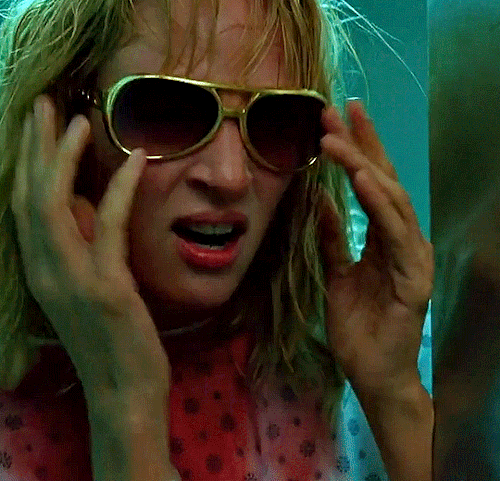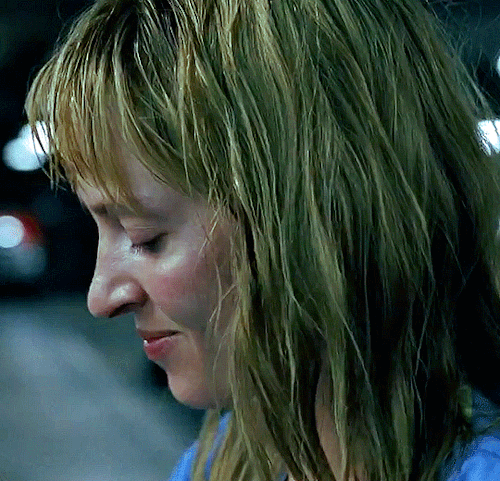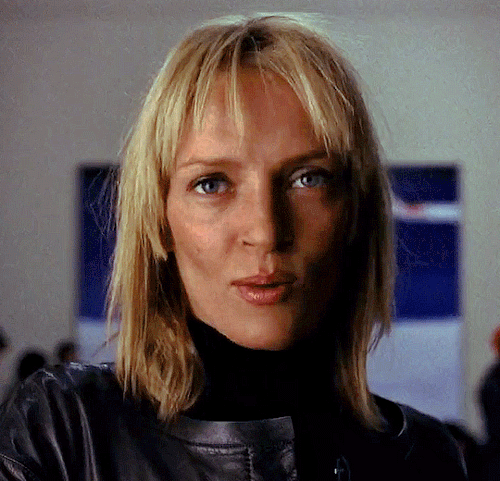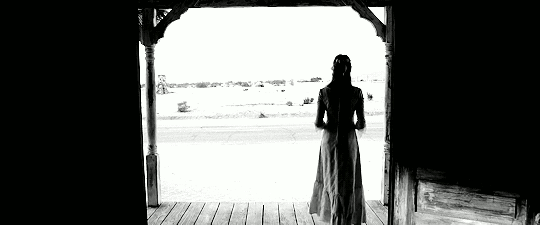"Theater In Taormina" By Gustav Klimt, 1886-88

"Theater in Taormina" by Gustav Klimt, 1886-88
More Posts from Isaisacrackhead and Others

Ballad of a Soldier (Grigoriy Chukhray, 1959)
Cast: Vladimir Ivashov, Zhanna Prokhorenko, Antonina Maksimova, Nikolay Kryuchkov, Evgeniy Urbanskiy, Elza Lezhdey, Aleksandr Kuznetsov, Evgeniy Teterin. Screenplay: Grigoriy Chukhray, Valentin Ezhov. Cinematography: Vladimir Nikolayev, Era Savelyeva. Production design: Boris Nemechek. Film editing: Mariya Timofeyeva. Music: Mikhail Ziv.
Before the collapse of the Soviet Union there used to be jokes about how Russians claimed to have invented everything from the light bulb to baseball. During a thaw in the Cold War that led to an exchange of films between the Soviets and the Americans, American audiences learned that the Russians had at least improved on a familiar Hollywood genre: the glossy, sentimental wartime romance. Even Hollywood was impressed, giving director Grigoriy Chukhray and his co-screenwriter Valentin Ezhov an Oscar nomination for best original screenplay. Ballad of a Soldier was a substantial hit, thanks in large part to its appealing leads, Vladimir Ivashov and Zhanna Prokhorenko. Ivashov plays Alyosha, a private serving at the Front who single-handedly cripples two German tanks and is rewarded with a leave to return home and see his mother. But it’s not easy making it cross-country in Russia during wartime, and he is forced to bribe his way onto a freight car carrying bales of hay. At a stop, he is joined by another stowaway, a young girl named Shura (Prokhorenko). She initially takes fright at discovering she has a traveling companion, but they begin to fall in love, only to face an inevitable separation. The two young leads – they were both untried actors still in their teens when they were cast – are touchingly fresh and innocent, making the contrast with the harshness that surrounds them more poignant. It’s a road movie as well as a love story, with some fine character bits by people they meet along the way, especially Evgeniy Urbanskiy as a soldier embittered by the loss of a leg and fearful of how he will be received by his wife. Although the core of the film focuses on Alyosha and Shura, their story is framed by some spectacularly filmed battle scenes at the beginning and Alyosha’s painfully brief return home at the end, sequences that surround the love story with scenes of urgency. Chukray has a real gift for pacing and rhythm, aided by his editor, Mariya Timofeeva, though he sometimes allows his cinematographers, Vladimir Nikolayev and Era Savalyeva, to indulge in camera tricks: At one point when Alyosha is being pursued by a tank, the camera does a head-over-heels rollover shot that ends with Alyosha and the tank upside-down on the screen, a giddy, gratuitous bit of fancy photography. Ballad of a Soldier certainly didn’t break any new ground, but it managed to make its genre clichés feel fresh.

The Peacock complaining to Juno (1881) by Gustave Moreau










The gorgeous Bird Mosaic from the so-called House of the Birds in Italica, Spain, features 35 different species of birds.










UMA THURMAN IN 'Kill Bill: Vol. 1' (2003)

Girl Arranging Her Hair (1918-19) by Abbott Handerson Thayer
“The man who lies ill in bed sometimes discovers that what he is ill from is usually his office, his business or his society and that through them he has lost all circumspection with regard to himself: he acquires this wisdom from the leisure to which his illness has compelled him.”
— Friedrich Nietzsche, Human, All Too Human, 289






Meiko Kaji in Shurayuki Hime aka Lady Snowblood (1973)
I think one of the reasons the trinity works so well is because they all come from three different distinct genres of literature.
The Batman mythos are heavily based in gothic literature and the tropes you find in gothic stories. Everything from the setting to the tone to the types of villains, with large amounts of mad scientists of the victor Frankenstein variety and mysterious serial killers. Even the Jokers clown and carnival imagery fits nicely into themes we see in stories like “the count of amontillado”.
Wonder Woman on the other hand is quite obviously more mythology based. Obviously the Greek gods literally appear in her books, but even Diana’s character and plot lines are reminiscent of Greek hero stories, with heavy ties into themes like hubris and nature. There’s also a lot of tie in’s from mythology around the world, with Roman mythology and African mythology specifically coming to mind.
Superman is obviously a “traditional” superhero, but more directly a lot of his stuff is sci fi in a way the other two are not. There’s the obvious aliens of it all, but also the way metropolis and his human villains are shown. Metropolis tends to be aesthetically futuristic in a way most of the DCU isn’t. And despite Lex Luthor being a “mad scientist,” he’s characterized quite differently then the scientists in Batman stories, with his flaws being less about “madness” (like in gothic stories) and more about control and hatred (which is more reminiscent of what we see in sci fi books).
It just makes sense that the reason these three are so successful is because they all fit into niches with very little overlap. None of their stories have the same tone or aesthetic as the others, which allows for so much variety. It’s actually really impressive.
just started reading superboy (1994) and the way kon's preyed on by all these grown ass women is so crazy . . . DUBBILEX DO SOMETHING

-
 candyhills reblogged this · 3 weeks ago
candyhills reblogged this · 3 weeks ago -
 souphus liked this · 3 weeks ago
souphus liked this · 3 weeks ago -
 echobunnygo-go liked this · 3 weeks ago
echobunnygo-go liked this · 3 weeks ago -
 shiro-absence reblogged this · 3 weeks ago
shiro-absence reblogged this · 3 weeks ago -
 malinowaj reblogged this · 3 weeks ago
malinowaj reblogged this · 3 weeks ago -
 officialcaptain liked this · 3 weeks ago
officialcaptain liked this · 3 weeks ago -
 rdesq reblogged this · 3 weeks ago
rdesq reblogged this · 3 weeks ago -
 mathurineduvallois liked this · 3 weeks ago
mathurineduvallois liked this · 3 weeks ago -
 pinkmoonwhitemoon liked this · 3 weeks ago
pinkmoonwhitemoon liked this · 3 weeks ago -
 thomasfuchscreative liked this · 3 weeks ago
thomasfuchscreative liked this · 3 weeks ago -
 thediaryofmagnalucius reblogged this · 3 weeks ago
thediaryofmagnalucius reblogged this · 3 weeks ago -
 thediaryofmagnalucius liked this · 3 weeks ago
thediaryofmagnalucius liked this · 3 weeks ago -
 major525 reblogged this · 3 weeks ago
major525 reblogged this · 3 weeks ago -
 adrianoburns liked this · 3 weeks ago
adrianoburns liked this · 3 weeks ago -
 moominmoonlight liked this · 3 weeks ago
moominmoonlight liked this · 3 weeks ago -
 zephyr-d-azur liked this · 3 weeks ago
zephyr-d-azur liked this · 3 weeks ago -
 wanderingmausoleum liked this · 3 weeks ago
wanderingmausoleum liked this · 3 weeks ago -
 wachsurfer2018 liked this · 3 weeks ago
wachsurfer2018 liked this · 3 weeks ago -
 djbalaclava liked this · 3 weeks ago
djbalaclava liked this · 3 weeks ago -
 mechamelancholy reblogged this · 3 weeks ago
mechamelancholy reblogged this · 3 weeks ago -
 mechamelancholy liked this · 3 weeks ago
mechamelancholy liked this · 3 weeks ago -
 artfromotherartists reblogged this · 3 weeks ago
artfromotherartists reblogged this · 3 weeks ago -
 aogxinfinity liked this · 3 weeks ago
aogxinfinity liked this · 3 weeks ago -
 dr-houses-left-buttcheek liked this · 3 weeks ago
dr-houses-left-buttcheek liked this · 3 weeks ago -
 diendane reblogged this · 3 weeks ago
diendane reblogged this · 3 weeks ago -
 ichabodscemetery liked this · 3 weeks ago
ichabodscemetery liked this · 3 weeks ago -
 anothertimeagain liked this · 3 weeks ago
anothertimeagain liked this · 3 weeks ago -
 mr-mojo-risin-00 reblogged this · 3 weeks ago
mr-mojo-risin-00 reblogged this · 3 weeks ago -
 galatea-est liked this · 3 weeks ago
galatea-est liked this · 3 weeks ago -
 supersaiyanriy reblogged this · 3 weeks ago
supersaiyanriy reblogged this · 3 weeks ago -
 artos-the-bear-ii liked this · 3 weeks ago
artos-the-bear-ii liked this · 3 weeks ago -
 gloomy-eden reblogged this · 3 weeks ago
gloomy-eden reblogged this · 3 weeks ago -
 zeyevc reblogged this · 3 weeks ago
zeyevc reblogged this · 3 weeks ago -
 mreowsworth liked this · 3 weeks ago
mreowsworth liked this · 3 weeks ago -
 swiftdreadnoughtworm reblogged this · 3 weeks ago
swiftdreadnoughtworm reblogged this · 3 weeks ago -
 pollypocketpvssy reblogged this · 3 weeks ago
pollypocketpvssy reblogged this · 3 weeks ago -
 weepuccino liked this · 3 weeks ago
weepuccino liked this · 3 weeks ago -
 noirpunk101 liked this · 3 weeks ago
noirpunk101 liked this · 3 weeks ago -
 elciccio7 liked this · 3 weeks ago
elciccio7 liked this · 3 weeks ago -
 kangamommynow liked this · 3 weeks ago
kangamommynow liked this · 3 weeks ago -
 headfirstforhelenaa reblogged this · 3 weeks ago
headfirstforhelenaa reblogged this · 3 weeks ago -
 headfirstforhelenaa liked this · 3 weeks ago
headfirstforhelenaa liked this · 3 weeks ago -
 theebridestrippedbare reblogged this · 3 weeks ago
theebridestrippedbare reblogged this · 3 weeks ago -
 mysocalledmugglelife reblogged this · 3 weeks ago
mysocalledmugglelife reblogged this · 3 weeks ago -
 mysocalledmugglelife liked this · 3 weeks ago
mysocalledmugglelife liked this · 3 weeks ago -
 uu8nr liked this · 3 weeks ago
uu8nr liked this · 3 weeks ago
